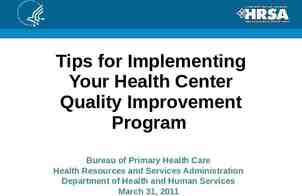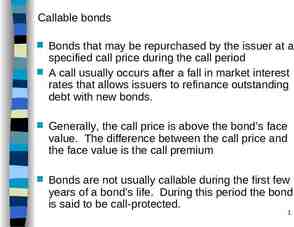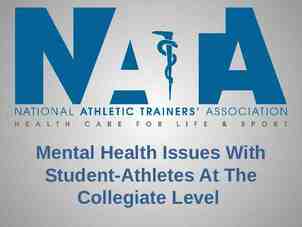Georgia’s Court System: JUVENILE OFFENDERS Presentation,
35 Slides4.66 MB

Georgia’s Court System: JUVENILE OFFENDERS Presentation, Graphic Organizers, & Activities

STANDARDS: SS8CG6 The student will explain how the Georgia court system treats juvenile offenders. a. Explain the difference between delinquent behavior and unruly behavior and the consequences of each b. Describe the rights of juveniles when taken into custody. c. Describe the juvenile justice system, emphasizing the different jurisdictions, terminology, and steps in the juvenile justice process. d. Explain the seven delinquent behaviors that can subject juvenile offenders to the adult criminal process, how the decision to transfer to adult court is made, and the possible consequences. Brain Wrinkles

Essential Questions What is the difference between a delinquent act and an unruly behavior? (CG6a) What consequences are there for delinquent and unruly behavior? (CG6a) What rights do juveniles have when taken into custody? (CG6b) How does the juvenile process differ from the adult process? (CG6c) How do the rights of juveniles differ from those of adults? (CG6c) What are the seven offenses for which a juvenile may be tried as an adult?

Juvenile Offenders CLOZE Notes 1 Juvenile Offenders Delinquent acts and unruly acts are legal terms for under the age of 16. Delinquent behavior is an act committed by a juvenile that would be a according to state law. Unruly behavior is an act committed by a juvenile that would not be a criminal offense . Delinquent Behavior Delinquent behavior would be considered a crime if it were . Treatment, rehabilitation, or is necessary. Examples include , theft, assault, rape, and murder. If the act is serious enough, the juvenile may be and subject to all adult penalties. Repeat offenders are called designated felons and are considered a and can be imprisoned for up to five years. Unruly Behavior Unruly behavior is when a juvenile violates a law that only . Treatment, , or supervision by the court is necessary. Examples include skipping school, , possession of alcohol or cigarettes, loitering in public places between 12 am and 5 am, and leaving home without parents’ permission. If a minor commits these acts, he or she may be placed in a . Juveniles’ Rights Juveniles have the do when taken into custody, as well as several more specifically for juveniles: The right to have immediately. The right to have parent/guardian and an before they can be questioned by authorities. The right to be at a trial. The right to . The right not to have names or . Brain Wrinkles

Juvenile Offenders CLOZE Notes 2 Juvenile Courts Courts in the juvenile justice system are focused on rather than punishing them like adults. The system has a lot of flexibility because its main goal is to and not necessarily to punish them. Juvenile courts have jurisdiction over cases involving , or those under 18 who don’t have a parent/guardian. In Georgia, juvenile courts may stand alone or be part of the . Steps There are several basic procedures for juveniles entering the . 1. - similar to arrest for adults 2. – decides if there is enough evidence to make a charge against the juvenile 3. Released to parent/guardian or – detained in a youth detention center or adult prison (depending on the crime). If detained, there must be a hearing within 72 hours to determine if proceedings should continue. 4. – optional if juvenile is first time offender. Juvenile must admit guilt to the judge and is under court supervision for 90 days. 5. Adjudicatory Hearing – judge determines guilt or innocence. There are . 6. Disposition Hearing – judge hears witnesses and . 7. – judge rules on punishment. Options include fines, probation, boot camp, youth detention center, and/or mandatory counseling and school attendance. 8. Appeal – juvenile can appeal ruling if there is enough evidence to prove . 7 Delinquent Behaviors If a juvenile between the ages of 13-17 commits one of the seven delinquent behaviors listed below, he/she can be and will face the same punishment. Voluntary Rape Aggravated sodomy Aggravated child molestation Aggravated sexual battery 1. 2. 3. 4. 5. 6. Brain Wrinkles

Juvenile Offenders CLOZE Notes 3 Adult Court The teen accused of one of the seven delinquent behaviors is no longer protected by the juvenile justice system and the case is sent to the . 1. A about the delinquent act and the juvenile may be sent to a detention center. 2. After the case is investigated, it is either dismissed or a . 3. If a petition is filed, an is scheduled. 4. The alleged offender may , deny the petition, or agree to the petition. 5. A court date is set and a . Consequences The possible consequences are the . A jury may find the defendant guilty and a . A guilty verdict to the Supreme Court. If convicted, the juvenile must spend all jail time (minimum of 10 years) in an . Brain Wrinkles

Georgia’s Court System: JUVENILE OFFENDERS Brain Wrinkles

Juvenile Offenders Delinquent acts and unruly acts are legal terms for behavior in minors under the age of 16. Delinquent behavior is an act committed by a juvenile that would be a criminal offense according to state law. Unruly behavior is an act committed by a juvenile that Brain Wrinkles

Brain Wrinkles

Delinquent Behavior Delinquent behavior would be considered a crime if it were committed by an adult. Treatment, rehabilitation, or court supervision is necessary. Examples include possession of drugs, theft, assault, rape, and murder. If the act is serious enough, the juvenile may be charged as an adult and subject to all adult penalties. Repeat offenders are called designated felons and are considered a danger to the community and can be imprisoned for up to Brain Wrinkles

Unruly Behavior Unruly behavior is when a juvenile violates a law that only pertains to children. Treatment, rehabilitation, or supervision by the court is necessary. Examples include skipping school, driving without a license, possession of alcohol or cigarettes, loitering in public places between 12 am and 5 am, and leaving home without parents’ permission. If a minor commits these acts, he or she Brain Wrinkles

Brain Wrinkles

Brain Wrinkles

Juveniles’ Rights Juveniles have the same rights as adults do when taken into custody, as well as several more specifically for juveniles: The right to have parent/guardian contacted immediately. The right to have parent/guardian and an attorney present before they can be questioned by authorities. The right to be represented by an attorney at a trial. The right to not be placed with adult Brain Wrinkles

Juvenile Courts Courts in the juvenile justice system are focused on rehabilitating juveniles rather than punishing them like adults. The system has a lot of flexibility because its main goal is to correct juvenile offenders and not necessarily to punish them. Juvenile courts have jurisdiction over cases involving children 17 and under, or those under 18 who don’t have a parent/guardian. In Georgia, juvenile courts may stand alone or be part of the superior court system. Brain Wrinkles

Brain Wrinkles

Steps There are several basic procedures for juveniles entering the criminal justice system. 1. Taken into Custody - similar to arrest for adults 2. Intake Officer – decides if there is enough evidence to make a charge against the juvenile 3. Released to parent/guardian or Detained – detained in a youth detention center or adult prison (depending on the Brain Wrinkles

Brain Wrinkles

Steps 4. Informal Adjustment – optional if juvenile is first time offender. Juvenile must admit guilt to the judge and is under court supervision for 90 days. 5. Adjudicatory Hearing – judge determines guilt or innocence. There are no juries in juvenile cases. 6. Disposition Hearing – judge hears witnesses and determines punishment. 7. Sentencing – judge rules on punishment. Options include fines, probation, boot camp, youth detention center, and/or mandatory counseling and school attendance. 8. Appeal – juvenile can appeal ruling if there is Brain Wrinkles

Brain Wrinkles

Brain Wrinkles

7 Delinquent Behaviors If a juvenile between the ages of 13-17 commits one of the seven delinquent behaviors listed below, he/she can be tried as an adult and will face the same punishment. 1. 2. 3. 4. 5. 6. 7. Murder Voluntary manslaughter Rape Aggravated sodomy Aggravated child molestation Aggravated sexual battery Armed robbery with a firearm Brain Wrinkles

Adult Court The teen accused of one of the seven delinquent behaviors is no longer protected by the juvenile justice system and the case is sent to the Superior Court. 1. A complaint is first made about the delinquent act and the juvenile may be sent to a detention center. 2. After the case is investigated, it is either dismissed or a petition is filed. Brain Wrinkles

Adult Court 3. If a petition is filed, an arraignment hearing is scheduled. 4. The alleged offender may remain silent, deny the petition, or agree to the petition. 5. A court date is set and a trial is conducted. Brain Wrinkles

Consequences The possible consequences are the same as an adult. A jury may find the defendant guilty and a sentence is passed down. A guilty verdict may be appealed to the Supreme Court. If convicted, the juvenile must spend all jail time (minimum of 10 Brain Wrinkles

Brain Wrinkles

The Sentencing of Bill Thomas The Left hand side of the room will come up with a presentation to argue that Bill should continue his probation. The right hand side of the room will come up with a presentation to argue that Bill should be sentenced to Juvenile Detention. Presentation of argument should contain at least 5 points Presentation of argument should contain at least 5 points to back up this claim Use evidence from the video Use evidence from the video to argue your point such as to argue your point such as Bill’s responsibilities at home Bill already being on probabtion

Brain Wrinkles List a minimum of 3 facts each about Delinquent Behavior and Unruly Behavior in the boxes provided below. What are their similarities and differences? Delinquent Behavior Unruly Behavior

Article Response Questions Part One: BEFORE READING Answer questions 1-3 BEFORE reading the article. 1. How do you feel about consequences for juveniles who commit delinquent acts? 2. Do you think it’s fair that these juveniles are tried as adults? Explain. 3. Should their punishment be less severe because of their age (despite the crime committed)? Explain. Part Two: AFTER READING Answer questions 4-9 AFTER reading the article. 4. What did Anthony Solomon do in 1999? 5. How old was he at the time? 6. What was Solomon’s sentence? 7. How long did he serve? 8.Why was Solomon released early? 9. Based on what you’ve learned about Georgia’s juvenile justice system, do you think his punishment was fair? Explain. Brain Wrinkles

Georgia High School Shooter Released from Prison July 28, 2016 by Jessica Szilagyi After serving 17 years in prison, the teen who shot and injured six classmates inside Heritage High School just a month after the deadly Columbine High School shooting has been released from prison. T.J. Solomon was 15 years old when he shot six Rockdale County High School students in May of 1999 when he entered the school’s commons area with his stepfather’s .22 caliber rifle and a .357 Magnum revolver. Solomon was released from prison Tuesday after serving seventeen of his twenty-year sentence. He had been incarcerated at Phillips State Prison in Buford, Georgia. The Atlanta Journal Constitution reports that Solomon was granted early parole by the Georgia State Board of Pardons and Paroles. They ruled that Solomon “demonstrated a clear record of rehabilitation including successfully performing in a Department of Corrections work release program.” The Rockdale County District Attorney opposed his release. He was originally sentenced to 40 years in prison after his lawyers claimed he was mentally ill. Following the trial and sentencing appeals, the sentence was reduced to 20 years. Solomon was sentenced in 2000. Solomon will now be on voice recognition monitoring, he cannot contact any of the victims, and he is barred from the campus of any public School in Georgia. Article from All On Georgia

Design A Detention Center – Rough Draft Directions: Imagine that you are in charge of designing a new youth detention center in your community. Complete the following plan to inform the community about your design. 1. What is the goal of your youth detention center? 2. Who will be sent to your facility? (Consider age, gender, type of crimes committed, etc.) 3. What kind of security will the center have? 4. What is the staff like at the center? What skills will they have? What roles will they take on? How many will you need? 5. What rules will be in place at the facility? 6. What will the juvenile offenders do with their time at the facility? (Consider your facility’s goal when answering.) 7. Describe some programs available for juvenile offenders at the center. 8. What concerns do you think the people might have with your center opening in their community? How will you address those concerns? Brain Wrinkles

Goal: Brain Wrinkles Students: Staff: Security: Rules:

How the students will spend their time: Brain Wrinkles Programs Available: Community Concerns Addressed:

Juvenile Offenders Comprehension Check 1. What is the main difference between delinquent and unruly behavior? 2. Examples of delinquent behavior: 3. Examples of unruly behavior: 4. In the juvenile justice system, where is the emphasis? 5. Do you think juveniles should be tried differently than adults by the court system? Explain. 6. When can a juvenile be tried as an adult? 7. List the 7 delinquent behaviors: 8. What court has jurisdiction when a juvenile is tried as an adult? 9. List the steps to transfer to adult court: 10. What happens to a juvenile when a guilty verdict is handed down? Brain Wrinkles

Name: #Emojis Create 3 emoticons to depict key concepts from today’s lesson. On the back of this slip, describe the importance of each emoji. Brain Wrinkles Name: #Emojis Create 3 emoticons to depict key concepts from today’s lesson. On the back of this slip, describe the importance of each emoji. Brain Wrinkles






